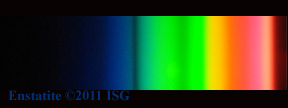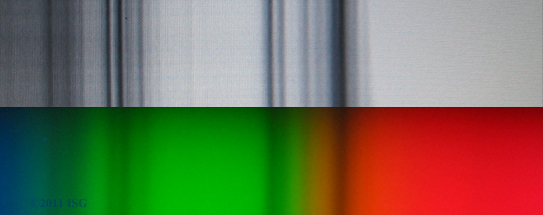Please sign in first
Not a member?

- Home
- Online Education Programs
- RG/RGA Legacy Entrance
- ISG Credentials
- Frequently Asked Questions
- Registry of Graduates
- Careers in Gemology
- Important Program Information
- Newsletters
- Identifying Lab Created Diamonds
- Black Diamond or Created Moissanite?
- Ebay, the GIA, and Section 230
- Lessons From the Angry Janitor
- Exposing the Truth about Lab-Created Diamonds
- AGTA Hobbles Dealers and Buyers
- Appraisers -v- Gem Labs…a Legal Imbalance!
- Understanding the Classification of Diamonds
- Cremation Diamonds: Insuring and Litigating
- Let’s Talk About Gemology Credentials
- Hometown Jewelers and the Force Majeure Clause
- Following the Critical Angle of Diamond Grading
- When Breitling Brought the Airmen Home
- Let’s Open a Refractometer
- Measuring the Energy of Light
- Quick Reference Guide to Sunstone
- ISG Seeing the Invisible Light
- Contact Us
ISG Seeing the Invisible Light

ISG Seeing the Invisible Light
What colors are out there that your eyes cannot see?
Look at the banner at the top of this page. Where is the rest of the word “Gemology” in our title? It is there. I know because I typed it personally. It is in black letters to stand out against the colored background of this actual digital image of a Songea Sapphire spectrum through an OPL Diffraction Grating Spectroscope. My fellow Old Geezers out there might have to use your peripheral vision, but that faint absorption line at the 450nm line in blue is there. But look at the other end of the banner. In spite of my typing in the words “International School of Gemology” on top of the spectrum, the words fade to black at the end. Why? No color. The spectrum ends.
Wait! No it doesn’t. The electromagnetic spectrum goes WAAAY beyond what we see in our banner. The spectrum does not end. OK, so the spectrum does not end but the colors end.
 Wait! How do we know that? Just because we cannot see beyond the 400nm to 700nm boundaries of the spectrum does not mean that there are no colors out there. Strange and unusual colors with exotic hues and tones that have never been seen by human eyes. Colors that exist beyond the boundaries of the image you see at left of an enstatite in a diffraction grating spectroscope.
Wait! How do we know that? Just because we cannot see beyond the 400nm to 700nm boundaries of the spectrum does not mean that there are no colors out there. Strange and unusual colors with exotic hues and tones that have never been seen by human eyes. Colors that exist beyond the boundaries of the image you see at left of an enstatite in a diffraction grating spectroscope.
Can we prove that there are colors present in this image that we simply cannot see? Maybe not. But then again…maybe we can use a little child-like imagination that I hope all of you out there still have and can imagine. Just imagine that there are colors beyond those of the rainbow. Indescribable colors that are invisible to our eyes because they are beyond our ability to see. Just maybe, we can prove these colors by Seeing the Invisible Light!
Check out the image below. We used our OPL spectroscope again to take a picture of the absorption spectra of a YAG, yttrium aluminum garnet. It has a lot of weird “rare earths” in it and has a pretty cool spectrum.

Look closely at how well the absorption lines are defined in this specimen’s image.
Of course, here is the problem. Above you see the cut down version of this spectrum that is normally used for textbooks and stuff. Below you see the full diffraction grating spectrum as taken with our OPL Diffraction Grating Spectroscope, our old Canon PowerShot A520, the ISG Spectroscope Light base, and a lot of arm contortion and breath holding to take about 100 images to get one that would be right. But in the image below you can even see that our copyright logo in black letters runs into nothingness here like our name in the banner above.

The words are typed in using black letters, but disappear due to our eyes no longer being able to see the colors. We are not seeing the invisible light. But there is a solution….

Above you see this same section of this YAG but also through our new MDM Spectrometer from Imperial Gem Instruments. This is a UV-VIS-NIR meaning it will read from below the 400nm line and above the 700nm line.
In other words, it will read beyond what our eyes can see. From around 340nm up to 1000nm. The very cool and very unique part about this particular spectrometer is that it actually produces a digital screen display of the areas that we cannot normally see by using a black and white display. Why black and white? Remember that our eyes cannot see the colors below or above the range of 400nm to 700nm. So the only way for this spectrometer to provide us with this very unique and rare view of the spectrum of this YAG outside of those limits is using black and white.
We can actually prove that the MDM and OPL are providing us with the same spectrum if we simply match them up. By taking screen shots of the MDM readout and the OPL image, we are able to match the absorption spectrum of the YAG through both spectrometers and see that we are seeing the spectrum in both.

Or…..are we? Here is the problem….. Above you see the two images of the YAG matched up. But in the next image you see the full picture that puts you in a place of Seeing the Invisible Light!
Below is all that you have seen, and all that you have not seen. Below you can see the visible spectrum of colors that is included in this UV-VIS-NIR spectrum, but now you can see the Invisible Light also. The areas below and beyond the visible that only this MDM Spectrometer can show us. The black line at the end of the red is the place that a special filter gizmo has to be swung into place in order for us to see the infrared region, but the entire spectrum of this YAG from around 360nm to just under 1000nm is visible below. In this image below you are quite literally Seeing the Invisible Light.

Now, here is the question that is going to require all of you to take off your fancy business hats and put on your kid’s imagination hats. Ready? Think about this: Our eyes can only see in the 400nm to 700nm range. We have confirmed that our YAG has colors in the 400nm to 700nm spectrum region. And yet we can see above that this YAG has far more going on that is beyond these visible limits.
It is a matter of simple common sense to believe that to the left of the blue color and the right of the red colors in the image above, there are colors that we simply cannot see? Why would there only be colors between 400nm and 700nm range? Common sense says that there must be more colors that extend both directions. Just different colors? And what would they look like? How would we describe them. Better yet, what would we name them?
 But seriously, at left you are seeing the spectrum of this YAG from just above 700nm up to 1000nm, well beyond what your eyes can normally see. You are actually Seeing the Invisible Light here, real time.
But seriously, at left you are seeing the spectrum of this YAG from just above 700nm up to 1000nm, well beyond what your eyes can normally see. You are actually Seeing the Invisible Light here, real time.
The bottom line is this: All things considered, it just makes no sense that colors do not exist outside of 400nm to 700nm. It is reasonable to believe that colors exist beyond both boundaries. Exotic colors that no one has ever seen and we simply cannot ever photograph. But they must be there.
The best part is that where technology leaves us, we can use that little part of all of us that got us into this business. That awe and excitement at the wonderful things that gemstones can do. In this case, a little bit of new technology allows us to view a part of this wonderful gem spectrum that we would normally never get a chance to see.
Perhaps we cannot actually see the colors in the outer reaches of this YAG spectrum, but we can See the Invisible Light that the gemstone produces.
The rest of those colors that we know are there but cannot see….I will leave to your imagination.
Robert James, FGA, GG
President, International School of Gemology